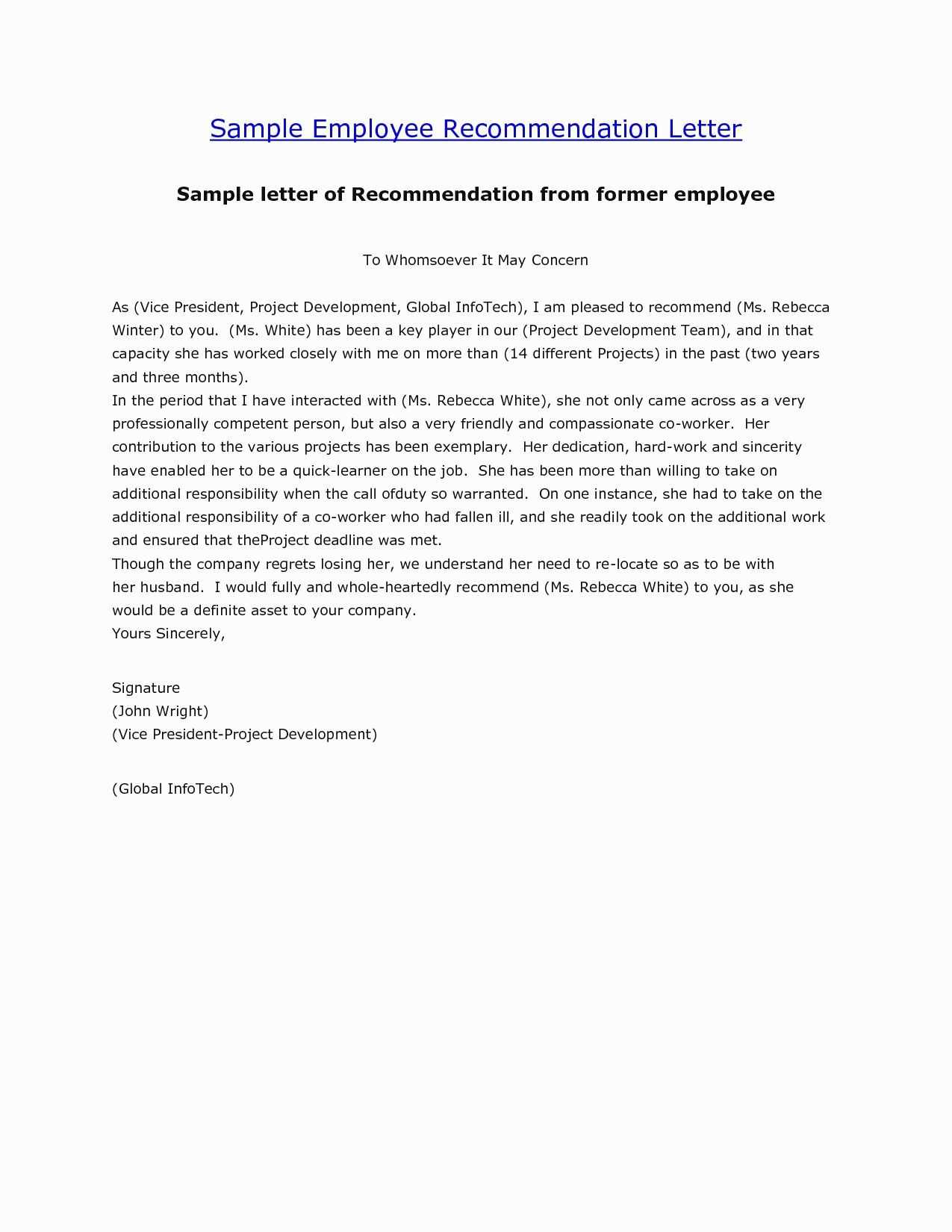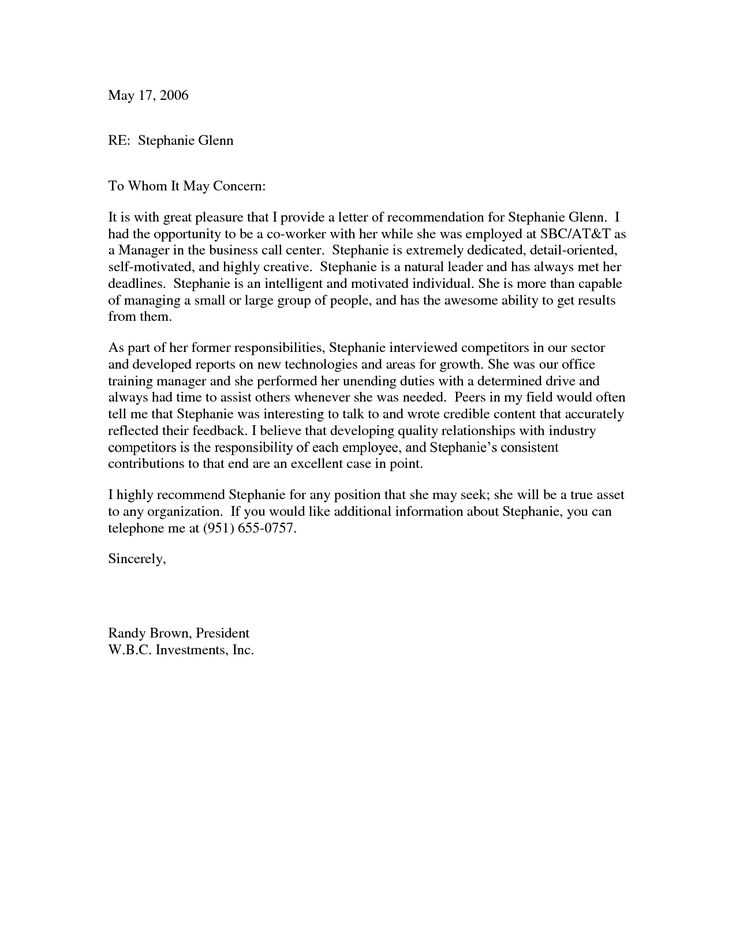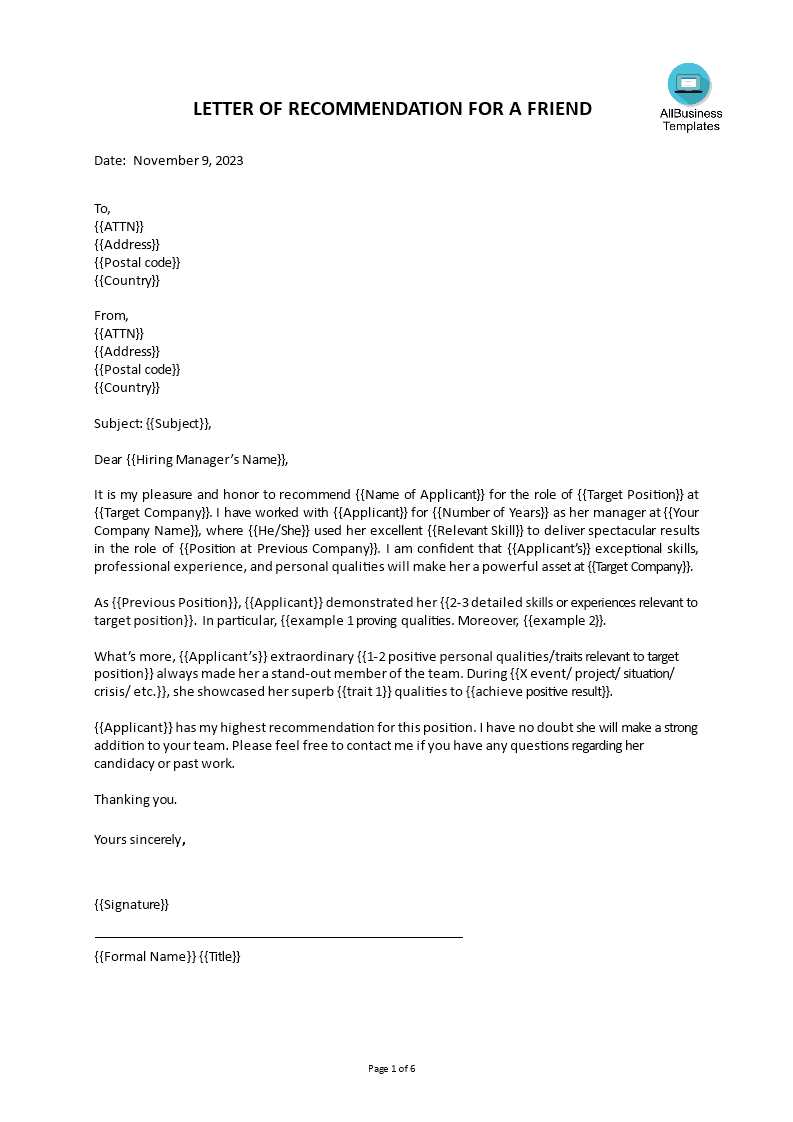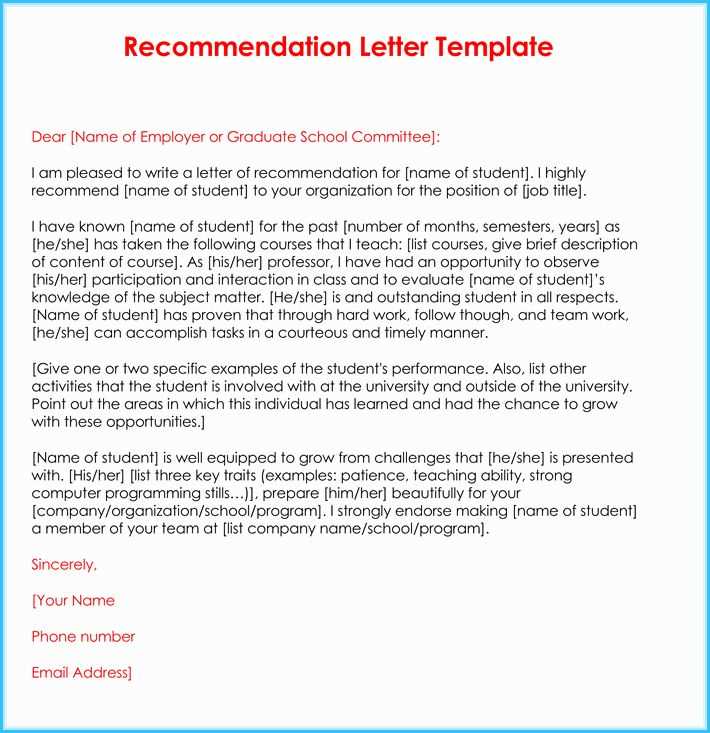Letter of Recommendation Template for Job Applications

Providing an effective endorsement can significantly impact an individual’s chances of securing new opportunities. A well-written document that highlights key strengths and accomplishments can make a strong impression on potential employers. This type of communication is a critical element in the professional world, offering insight into an applicant’s capabilities and work ethic.
Understanding the structure of a proper endorsement is essential. It’s not just about listing qualifications but framing them in a way that makes the subject stand out. Including relevant examples, highlighting achievements, and maintaining a professional tone all contribute to the overall effectiveness of the message.
Whether you’re writing on behalf of a colleague or seeking one yourself, the ability to craft a thoughtful and compelling document can enhance the credibility of the person you’re endorsing.
How to Write a Strong Reference

Creating a compelling endorsement involves more than simply stating someone’s skills. The document should effectively convey the individual’s qualifications, character, and contributions. A powerful endorsement highlights specific achievements and provides context to the claims, making the individual stand out to potential decision-makers.
Focus on Key Strengths

When crafting a strong endorsement, focus on the traits that are most relevant to the opportunity at hand. Consider these key areas:
- Skills: Mention specific technical or soft skills that align with the role or situation.
- Experience: Highlight any relevant experiences that demonstrate proficiency or expertise.
- Character: Discuss personal qualities that make the individual a valuable asset in the workplace or community.
Provide Concrete Examples
Effective endorsements are grounded in real-world examples. This adds credibility and makes the message more tangible. Some tips include:
- Describe particular accomplishments that show the individual’s impact.
- Provide instances where the person went above and beyond expectations.
- Link their contributions to positive outcomes, such as team success or company growth.
Key Elements of a Job Recommendation
Effective endorsements share several core components that make them impactful and persuasive. These elements not only establish credibility but also clearly communicate why the individual is a suitable candidate. A well-structured document presents information in a way that resonates with the reader and strengthens the subject’s case.
| Element | Description |
|---|---|
| Introduction | Begin by introducing yourself and explaining your relationship to the individual. This provides context for your endorsement and sets the stage for the details to come. |
| Key Qualities | Highlight the most important skills, traits, or attributes that make the person stand out. Focus on qualities that align with the desired role or objective. |
| Specific Achievements | Provide concrete examples of past successes that demonstrate the individual’s capabilities. This can include successful projects or notable contributions to a team or organization. |
| Closing Remarks | Conclude with a strong endorsement, summarizing why the person is a great fit for the role or opportunity. Offer your confidence in their future success. |
Showcasing Skills and Qualities Effectively
To make a strong impression, it’s crucial to present an individual’s strengths and attributes in a way that aligns with the expectations of the reader. Highlighting both hard and soft skills with clarity and precision ensures that the person’s qualifications are communicated effectively. A thoughtful approach focuses on showcasing abilities through real-life examples and evidence, making the person stand out as a valuable asset.
Start by identifying the key qualities that align with the specific needs of the opportunity. Whether it’s technical expertise or interpersonal skills, the goal is to frame these attributes in a manner that demonstrates how they contribute to success. Use concrete examples that relate to the person’s work ethic, problem-solving abilities, and achievements to illustrate their impact.
Ensure that the strengths mentioned are not only relevant but also well-supported by the context. A clear connection between the qualities and their practical applications will make the endorsement feel authentic and compelling. Always tie the individual’s skills to outcomes or achievements to emphasize their real-world effectiveness.
Common Mistakes to Avoid in Letters
When crafting an endorsement, avoiding common pitfalls is essential to ensuring the document is professional and persuasive. Certain missteps can weaken the message and reduce its impact. By being aware of these errors, you can create a more effective and credible communication that truly represents the individual’s qualifications.
Lack of Specificity
One of the most common mistakes is being too vague. General statements such as “a hard worker” or “good team player” do not provide enough detail to make a strong case. It’s important to be specific about the individual’s achievements and how they directly contributed to positive outcomes. Instead of broad phrases, use concrete examples to highlight the person’s skills and strengths.
Failure to Tailor the Content
Another mistake is not tailoring the content to the specific opportunity. An endorsement that is generic or not relevant to the particular role or situation might come across as impersonal or less convincing. Make sure to address the qualities and experiences that are most pertinent to the person’s desired position or goal, ensuring the endorsement feels targeted and thoughtful.
Customizing Your Letter for Different Jobs
Each opportunity requires a tailored approach to ensure the message resonates with the specific needs of the position. By adjusting the content to reflect the qualities most relevant to the desired role, you can strengthen the individual’s case and improve their chances of success. Customizing the communication shows that the endorsement is thoughtful and aligned with the requirements of the position.
Understand the Role: Begin by thoroughly reviewing the job description and identifying the key skills and attributes needed. This will guide you in highlighting the person’s experiences that align with those requirements. Emphasize qualities that directly relate to the responsibilities and challenges of the role.
Adjusting the tone and focus of your endorsement will make it stand out and demonstrate that you are fully aware of the role’s specific demands. A personalized touch can make all the difference.
Tips for Professional Formatting and Tone

Presenting an endorsement in a clear and polished manner is crucial for making a positive impression. Proper formatting and tone help ensure that the message is both readable and impactful. A well-organized structure combined with a professional, yet approachable tone enhances the credibility of the content and makes it more compelling to the reader.
Start by ensuring that the layout is clean and easy to follow. Use clear paragraphs and headings to guide the reader through the document. Consistency in font size and style adds to the document’s professional appearance, while appropriate spacing between sections helps with readability. A structured approach will prevent the content from feeling cluttered or overwhelming.
When it comes to tone, aim for a balance between formality and warmth. The language should be respectful and polite, yet sincere and personable. Avoid using overly complex language or jargon; instead, opt for straightforward and clear expressions that convey genuine enthusiasm and confidence in the individual’s abilities.